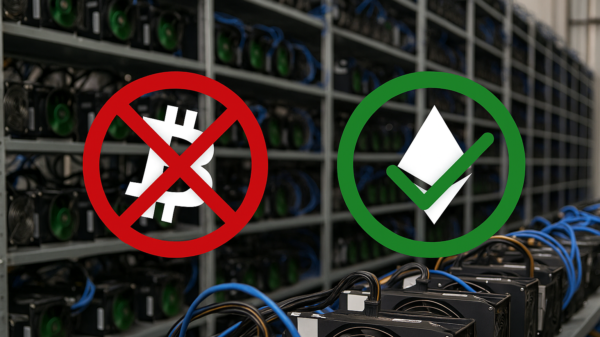Bitcoin mining companies will soon have a new way of proving their commitments to the environment and energy conservation initiatives after a new system that measures energy spending was introduced this week.
The German non-profit Energy Web said on Wednesday it has developed Green Proofs of BTC (GP4BTC), an independent, standardized system for energy measurement for the Bitcoin mining industry.
The system aims to provide clear and measurable data on sustainable mining practices that will benefit companies by giving them recognition, a good reputation and easier access to financial support among other rewards.
Individual miners upload their mining statistics onto the EW Chain blockchain, which are then verified by an independent third party. In response, they receive verification tokens indicating the honesty of the application, which can then be used to demonstrate their commitments to environmental initiatives.
The platform assesses miners using two main scores: the Clean Energy Score and the Grid Impact Score. These scores are determined by evaluating operational information, including data on location and energy consumption.
Read more: Bank of Canada opens public consultation on digital Canadian dollar
Read more: Cipher Mining adds another 11,000 ASIC rigs to its fleet in deal with Canaan Inc.
Grid Impact Score determines carbon intensity in the grid
The Clean Energy Score measures the extent to which miners procure renewable electricity, while the Grid Impact Score evaluates the carbon intensity of the grid in the regions where the operations are situated.
Additionally, the scores consider the miners’ contributions to grid stability through their ability to adjust their electricity demand flexibly. By combining these scores, the certification platform provides a comprehensive assessment of miners’ sustainability practices, enabling clearer understanding and recognition of their efforts.
The Energy Web platform and registry have been introduced with the participation of certified miners including Argo Blockchain (LON: ARB), DMG Blockchain Solutions (TSXV: DMGI), Hive Blockchain Technologies (TSXV: HIVE) and Gryphon Digital Mining.
The scoring approach has been as a collaborative effort between more than 35 miners, NGOs, grid operators, and other participants from the energy and crypto markets. The scoring method corresponds to the approaches followed in corporate Environmental, Social, and Governance (ESG) reporting within the financial sector.
Read more: Atlas Technology to use underwater data center for the first time
Read more: The world’s largest cryptocurrency exchange leaves Canadian market
Energy Web provides transparency for decarbonization initiatives
By leveraging these best practices and involving multiple stakeholders, GP4BTC ensures a robust and comprehensive framework for evaluating and promoting sustainable mining practices in the crypto industry.
GP4BTC provides transparency into the initiatives put forth by Bitcoin miners and other hosting companies to decarbonize their operations. Certifications will be offered to Bitcoin miners based on their successful use of clean energy and contributions to grid stability via demand response.
Demand response refers to a strategy used to manage and balance the supply and demand of electricity in the power grid. It involves adjusting electricity consumption in response to signals or incentives from the grid operator or utility company.
The goal of demand response is to reduce or shift the demand for electricity during periods of high demand or when the grid is strained, thereby avoiding blackouts, improving grid reliability, and reducing the need for additional power generation.
“Today Bitcoin is scrutinized for its electricity consumption and associated climate impact,” said Amy Westervelt, senior delivery lead and head of the GP4BTC Initiative.
“While leading miners are pursuing strategies to reduce their carbon footprints, the industry lacks a unifying definition of sustainable mining, as well as a shared framework for assessing and verifying miners’ sustainability practices. Green Proofs for Bitcoin seeks to provide this.”
Up until now, there have been fragmented and inconsistent attempts to establish standardized practices for procuring clean energy and promoting collaborative efforts in the Bitcoin mining sector, according to Westervelt.
While other industries with high electricity consumption have benefited from tailored plans to reduce carbon emissions, Bitcoin mining has largely been overlooked, resulting in a discouraging situation where environmentally conscious miners have had to navigate their sustainability journeys on their own.
The aim of GP4BTC is to break this cycle and create a positive feedback loop by making it easier to define, pursue, and financially benefit from clean mining practices. The ultimate objective is for clean mining to become the norm rather than the exception.
.
Follow Joseph Morton on Twitter
joseph@mugglehead.com














